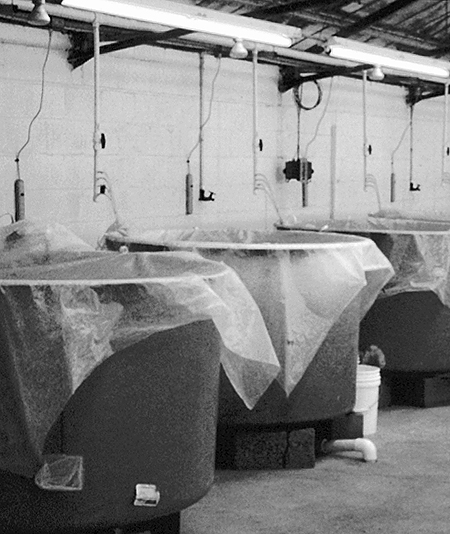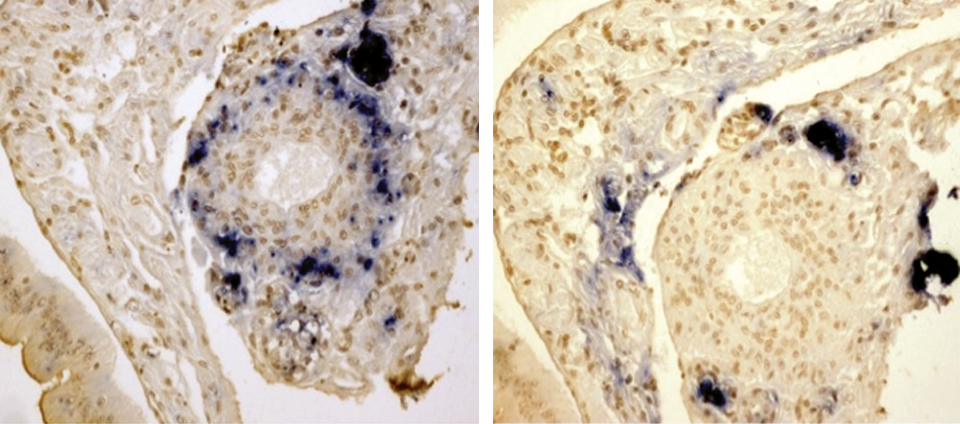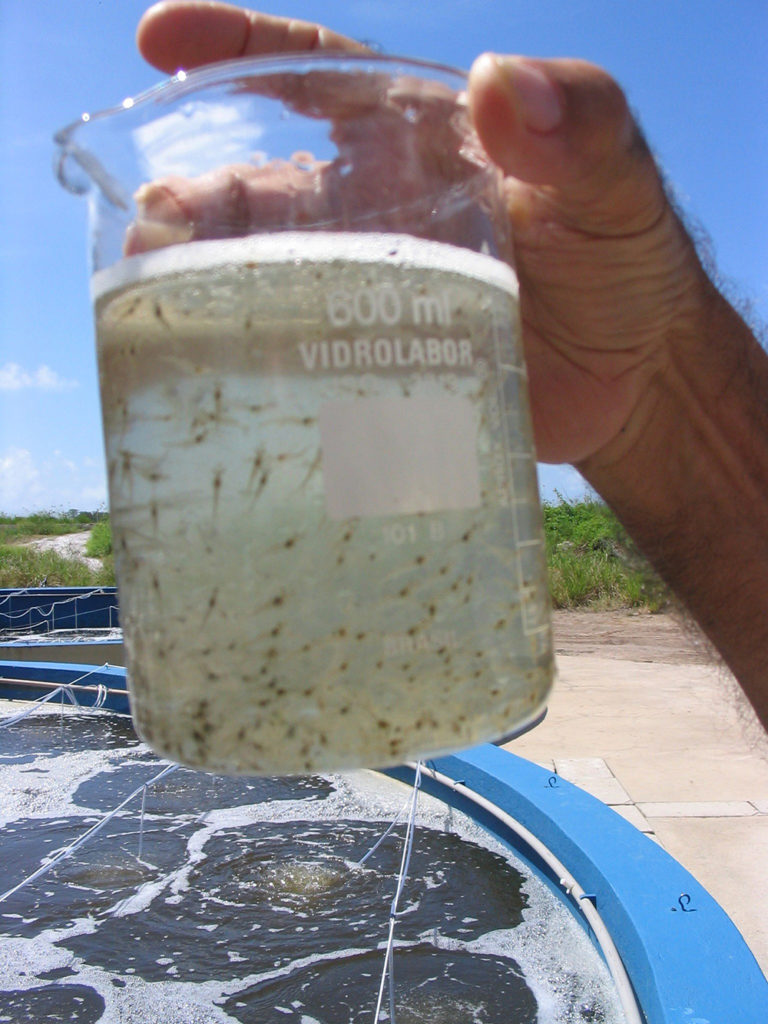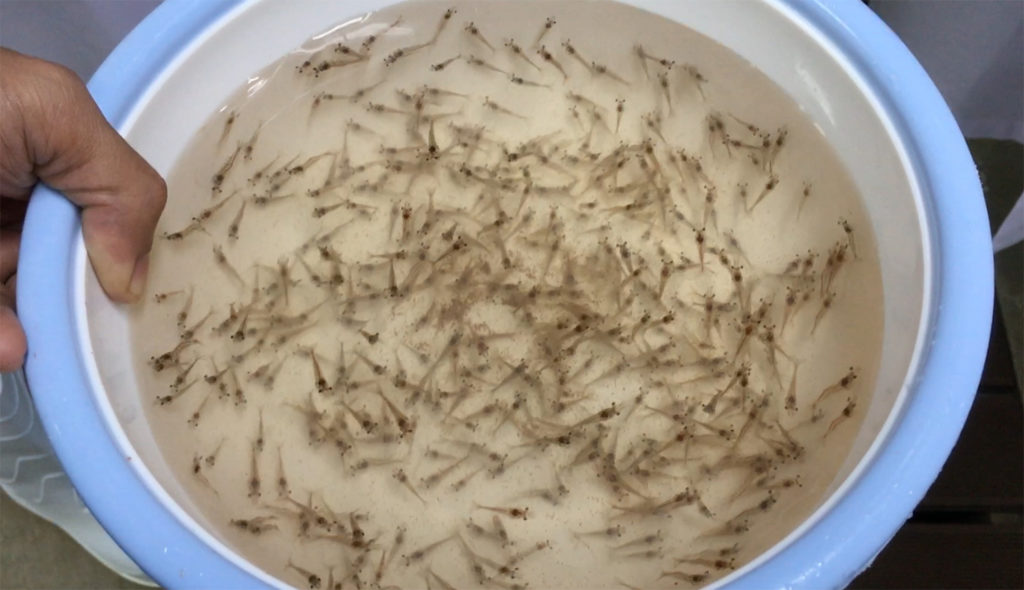14-day study conducted at the University of Arizona

In 1999, significant mortalities of a Taura Syndrome Virus (TSV)-tolerant strain of the Western blue shrimp (Litopenaeus stylirostris) occurred at shrimp farms in Mexico. These mortalities resulted from TSV epizootics accompanied by a slight deviation in the gross signs typical of TSV infection, and there were concerns a new TSV strain had emerged.
Since 2000, researchers from the University of Arizona (UAZ) in Tucson, Arizona, USA, have analyzed TSV geographic and year isolates in relation to a reference isolate from Hawaii, USA, to determine possible differences in virulence and host range. Using selected Office International des Epizooties (OIE) diagnostic methods and sequence analysis of nucleotides and amino acids in the viral genome, the researchers compared the reference isolate with three TSV isolates from Mexico and found similar but distinct isolates of TSV.
New serotype from Belize
In 2001, significant mortalities of L. vannamei from TSV epizootics at shrimp farms in Belize raised concerns that another TSV strain had emerged. UAZ researchers purified the Belize 2002 isolate of TSV from cultured L. vannamei and found the virions were slightly but significantly larger than those from Hawaii and Mexico.
Again, using OIE diagnostic methods and sequence analysis, UAZ researchers concluded that the Belize isolate represented a new serotype. Importantly, broodstock suppliers to Belize reported that shrimp bred for resistance to the “old” Taura strain, the Hawaii isolate, succumbed to the “new” Belize strain.
Research to develop tolerance
In response to these concerns, researchers from the Oceanic Institute explored the possibility of developing selectively bred families of L. vannamei that exhibited tolerance to both the Hawaii and Belize TSV serotypes. Since 1995, researchers at Oceanic Institute have developed families of shrimp that exhibit high survival to the Hawaii TSV serotype.
Offspring from these unique families were produced and distributed to several U.S. broodstock suppliers and subsequently challenged with both TSV serotypes. Results from these challenge tests are summarized below.
Experimental challenge
Juvenile shrimp of about 2 grams from Rainbow Hawaii Farms of Mililani, Hawaii, USA, were shipped to UAZ and exposed to the TSV serotypes by feeding them infected shrimp tissue at 10 percent of their body weight once per day for three consecutive days. Shrimp survival was monitored daily, and final survival was determined after 14 days (Table 1).
Moss, Survival of two populations of L. vannamei, Table 1
| TSV Serotype | Shrimp Strain | Survival (%) |
|---|---|---|
| Hawaii TSV | O.I. “Kona” shrimp (Positive control) | 20 |
| Hawaii TSV | Rainbow Hawaii Farms shrimp | 95 |
| Belize TSV | O.I. “Kona” shrimp (Positive control) | 0 |
| Belize TSV | Rainbow Hawaii Farms shrimp | 63 |
| None | Rainbow Hawaii Farms shrimp (Negative control) | 100 |
Positive and negative control groups were also evaluated. The negative control group, which consisted of selectively bred shrimp fed a commercial diet for the 14-day study, evaluated shrimp mortalities unrelated to TSV exposure. Positive control groups consisted of the Oceanic Institute “Kona” reference strain of L. vannamei exposed to both TSV serotypes. Kona shrimp are susceptible to TSV and exhibit consistently low survival of 0 to 40 percent after TSV exposure.
Positive controls were evaluated to ensure the virus-infected tissue used in the challenges was infectious. All selectively bred shrimp were maintained in 1,000-liter fiberglass tanks, whereas the Kona shrimp were maintained in 90-liter glass aquariums. The tanks and aquariums contained artificial seawater at 33 ppt salinity and 29 degrees-C and were equipped with biological filters.
Survival to TSV exposure
The selectively bred shrimp exhibited 95 percent survival after exposure to the Hawaii TSV serotype, while the Kona reference strain experienced only 20 percent survival. The selectively bred shrimp also had 63 percent survival after exposure to the Belize TSV serotype, whereas all the Kona shrimp died by day 4 of the challenge test.
These results indicated the Belize TSV serotype was more lethal than the Hawaii serotype, especially for the reference shrimp. However, through artificial selection or other genetic improvement techniques, shrimp breeders may be able to compete in the “arms race” against mutating viral pathogens.
(Editor’s Note: This article was originally published in the August 2003 print edition of the Global Aquaculture Advocate.)
Now that you've reached the end of the article ...
… please consider supporting GSA’s mission to advance responsible seafood practices through education, advocacy and third-party assurances. The Advocate aims to document the evolution of responsible seafood practices and share the expansive knowledge of our vast network of contributors.
By becoming a Global Seafood Alliance member, you’re ensuring that all of the pre-competitive work we do through member benefits, resources and events can continue. Individual membership costs just $50 a year.
Not a GSA member? Join us.
Authors
-
Shaun M. Moss, Ph.D.
The Oceanic Institute
41-202 Kalanianaole Highway
Waimanalo, Hawaii 96795 USA[103,114,111,46,101,116,117,116,105,116,115,110,105,99,105,110,97,101,99,111,64,115,115,111,109,115]
-
Steve M. Arcel
The Oceanic Institute
41-202 Kalanianaole Highway
Waimanalo, Hawaii 96795 USA -
Dustin R. Moss
The Oceanic Institute
41-202 Kalanianaole Highway
Waimanalo, Hawaii 96795 USA -
Yu-Sen Hwang
Rainbow Hawaii Farms
Mililani, Hawaii, USA -
Brenda White-Noble
University of Arizona,
Department of Veterinary Science
Tucson, Arizona, USA -

Donald V. Lightner, Ph.D.
University of Arizona,
Department of Veterinary Science
Tucson, Arizona, USA
Tagged With
Related Posts

Health & Welfare
Study: TSV exposure may lessen YHV effects in white shrimp
Since Taura syndrome virus was in the Americas when yellow head virus become pandemic in Asia, it is possible TSV prevented shrimp in the Western Hemisphere from infection by materials from Asia containing YHV. To test this idea, the authors evaluated the viral interactions in shrimp preinfected with TSV and then challenged with YHV.

Health & Welfare
A study of Zoea-2 Syndrome in hatcheries in India, part 1
Indian shrimp hatcheries have experienced larval mortality in the zoea-2 stage, with molt deterioration and resulting in heavy mortality. Authors investigated the problem holistically.

Health & Welfare
A study of Zoea-2 Syndrome in hatcheries in India, part 2
Indian shrimp hatcheries have experienced larval mortality in the zoea-2 stage, with molt deterioration and resulting in heavy mortality. Authors considered biotic and abiotic factors. Part 2 describes results of their study.

Health & Welfare
Challenging Pacific white postlarvae with AHPND
Study results indicate that P. vannamei challenged with AHPND in biofloc had higher survival rates than shrimp challenged in clear water.


